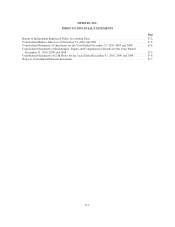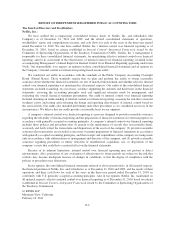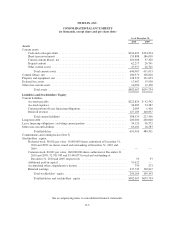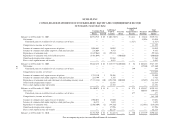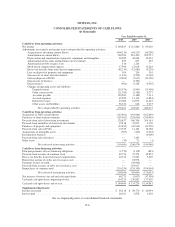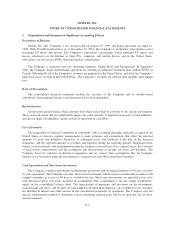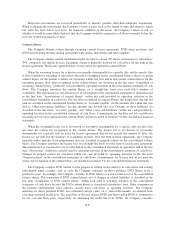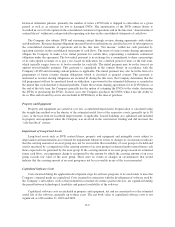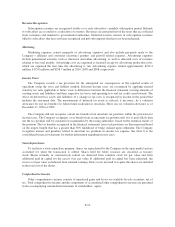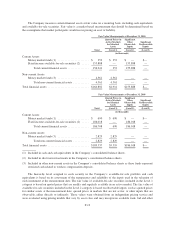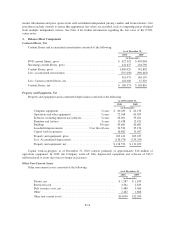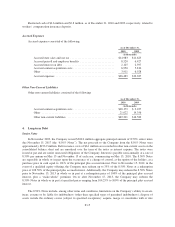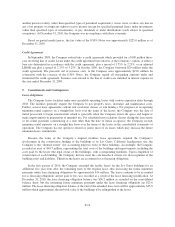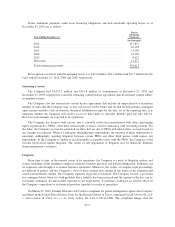NetFlix 2010 Annual Report Download - page 51
Download and view the complete annual report
Please find page 51 of the 2010 NetFlix annual report below. You can navigate through the pages in the report by either clicking on the pages listed below, or by using the keyword search tool below to find specific information within the annual report.NETFLIX, INC.
NOTES TO CONSOLIDATED FINANCIAL STATEMENTS
1. Organization and Summary of Significant Accounting Policies
Description of Business
Netflix, Inc. (the “Company”) was incorporated on August 29, 1997 and began operations on April 14,
1998. With 20 million subscribers as of December 31, 2010, the Company is an Internet subscription service
streaming TV shows and movies. The Company’s subscribers can instantly watch unlimited TV shows and
movies streamed over the Internet to their TVs, computers and mobile devices and in the United States,
subscribers can also receive DVDs delivered quickly to their homes.
The Company is organized into two operating segments, United States and International. In September
2010, the Company began international operations by offering an unlimited streaming plan without DVDs in
Canada. Substantially all of the Company’s revenues are generated in the United States, and all of the Company’s
long-lived assets are held in the United States. The Company’s revenues are derived from monthly subscription
fees.
Basis of Presentation
The consolidated financial statements include the accounts of the Company and its wholly-owned
subsidiaries. Intercompany balances and transactions have been eliminated.
Reclassification
Certain prior period balance sheet amounts have been reclassified to conform to the current presentation.
These reclassifications did not significantly impact any prior amounts of reported total assets or total liabilities,
and did not impact stockholders’ equity, results of operations or cash flows.
Use of Estimates
The preparation of financial statements in conformity with accounting principles generally accepted in the
United States of America requires management to make estimates and assumptions that affect the reported
amounts of assets and liabilities, disclosure of contingent assets and liabilities at the date of the financial
statements, and the reported amounts of revenues and expenses during the reporting periods. Significant items
subject to such estimates and assumptions include the estimate of useful lives of its content library; the valuation
of stock-based compensation; and the recognition and measurement of income tax assets and liabilities. The
Company bases its estimates on historical experience and on various other assumptions that the Company
believes to be reasonable under the circumstances. Actual results may differ from these estimates.
Cash Equivalents and Short-term Investments
The Company considers investments in instruments purchased with an original maturity of 90 days or less to
be cash equivalents. The Company classifies short-term investments, which consist of marketable securities with
original maturities in excess of 90 days as available-for-sale. Short-term investments are reported at fair value
with unrealized gains and losses included in accumulated other comprehensive income within stockholders’
equity in the consolidated balance sheet. The amortization of premiums and discounts on the investments,
realized gains and losses, and declines in value judged to be other-than-temporary on available-for-sale securities
are included in interest and other income in the consolidated statements of operations. The Company uses the
specific identification method to determine cost in calculating realized gains and losses upon the sale of short-
term investments.
F-7






